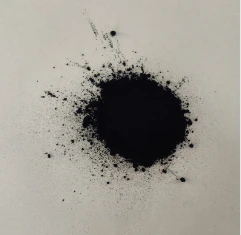china indigo blue natural dye
The Allure of China Indigo Blue A Journey into Natural Dyeing
Indigo has captivated the world for centuries with its vibrant blue hue, and nowhere is this more evident than in China, a country with a rich history of natural dyeing techniques. The color blue, renowned for its beauty and symbolism, carries deep cultural significance in Chinese society. From traditional textiles to contemporary fashion, indigo dye has become synonymous with both artistry and heritage.
The Historical Significance of Indigo in China
Indigo dyeing traces back thousands of years in China, with archaeological evidence indicating its use during the Han Dynasty (206 BCE – 220 CE). The ancient Chinese referred to indigo as “qing,” a term that encompasses various shades of blue and green. Over the centuries, it became an essential part of Chinese culture, utilized in clothing, home textiles, and ceremonial garments. The dye’s resonance with nature, representing the sky and water, played a vital role in various philosophies and traditions.
The Dyeing Process Craftsmanship and Tradition
The art of indigo dyeing is steeped in tradition, utilizing natural sources to create the distinctive blue shades. Traditionally, indigo dye is extracted from the leaves of the indigo plant, particularly Indigofera tinctoria, which is cultivated in several regions of China. The process begins with fermenting the leaves to produce a rich, foamy solution. This fermentation is crucial, as it converts the indican compound within the leaves into indoxyl, which, once oxidized, yields the deep blue color we admire.
Dyeing with indigo is a magical process. Fabrics are typically immersed repeatedly in the dye vat, allowing layers of color to build up. Common materials like cotton, silk, and linen were used historically, and each piece tells a unique story through variations in depth and shade. As fabric is pulled from the dye, it appears greenish but transforms into the desired blue as it oxidizes in the air. This enchanting transformation is a testament to the artistry involved in the dyeing process.
Modern Applications and Cultural Renaissance
china indigo blue natural dye

In recent years, the resurgence of interest in natural dyes has sparked a cultural renaissance in indigo dyeing in China. Artisans and designers are revisiting traditional techniques, blending them with contemporary aesthetics. The revival encompasses everything from the creation of fashion collections to home decor items, where indigo is celebrated not just for its color but for its eco-friendliness and sustainability.
In cities like Hangzhou and Hunan, workshops and studios are dedicated to preserving and innovating the craft. Artisans experiment with tie-dye, shibori, and other resist-dyeing techniques, creating stunning textiles that reflect both tradition and modernity. Consumers are increasingly drawn to these handcrafted items, seeking unique pieces that carry a story and an artisanal quality.
Environmental Considerations and Sustainability
The movement toward natural dyes, including indigo, is also a response to the growing environmental concerns associated with synthetic dyes. The textile industry is notorious for its pollution, and many consumers are looking for sustainable alternatives. Natural indigo not only reduces the ecological footprint of dyeing but also promotes biodiversity through the cultivation of indigo plants.
Chinese indigo artisans often work with local farmers, forming a sustainable ecosystem where traditional agriculture meets modern design. This collaboration ensures that the art of indigo dyeing will continue to thrive for future generations.
Conclusion A Timeless Legacy
China's indigo blue dyeing tradition, with its historical roots and contemporary applications, represents more than just a color; it embodies a deep cultural legacy. As artisans and designers reimagine what indigo can become, they are not only preserving an age-old practice but also celebrating the interconnectedness of nature, craft, and identity. In a world increasingly drawn to sustainable practices, China’s indigo blue reminds us that beauty and responsibility can go hand in hand, weaving stories of the past into the fabric of the future.
-
The Timeless Art of Denim Indigo Dye
NewsJul.01,2025
-
The Rise of Sulfur Dyed Denim
NewsJul.01,2025
-
The Rich Revival of the Best Indigo Dye
NewsJul.01,2025
-
The Enduring Strength of Sulphur Black
NewsJul.01,2025
-
The Ancient Art of Chinese Indigo Dye
NewsJul.01,2025
-
Industry Power of Indigo
NewsJul.01,2025
-
Black Sulfur is Leading the Next Wave
NewsJul.01,2025

Sulphur Black
1.Name: sulphur black; Sulfur Black; Sulphur Black 1;
2.Structure formula:
3.Molecule formula: C6H4N2O5
4.CAS No.: 1326-82-5
5.HS code: 32041911
6.Product specification:Appearance:black phosphorus flakes; black liquid

Bromo Indigo; Vat Bromo-Indigo; C.I.Vat Blue 5
1.Name: Bromo indigo; Vat bromo-indigo; C.I.Vat blue 5;
2.Structure formula:
3.Molecule formula: C16H6Br4N2O2
4.CAS No.: 2475-31-2
5.HS code: 3204151000 6.Major usage and instruction: Be mainly used to dye cotton fabrics.

Indigo Blue Vat Blue
1.Name: indigo blue,vat blue 1,
2.Structure formula:
3.Molecule formula: C16H10N2O2
4.. CAS No.: 482-89-3
5.Molecule weight: 262.62
6.HS code: 3204151000
7.Major usage and instruction: Be mainly used to dye cotton fabrics.

